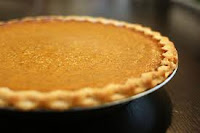I want to share an online resource that can help you stay healthier, track your progress and reach your nutrition goals! I absolutely love the SuperTracker website. Created by the United States Department of Agriculture (USDA), it allows you to sign up for free, make a profile and set up your own personalized plan! When you enter basic information such as your height, weight and level of physical activity, it lets you know what your recommend daily calorie and food group intake is and provides tips to help you achieve those in a healthy way! You can also create a personal plan for physical activity if you are interested in that aspect of wellness. Here are some of the main things you can do with SuperTracker:
 |
| Photo Courtesy Of: https://www.supertracker.usda.gov /foodapedia.aspx |
- "Food-A-Pedia"
- This allows you to research nutrition information for over 8,000 different foods. You can even compare them side-by-side.
- "Food Tracker"
- This is my favorite part! Enter all of the foods you eat throughout the day, and track if you are on target with your daily calorie limit and suggested food group intake!
- "Physical Activity Tracker"
- Here you can enter your daily physical activities, track your progress, and set your goals!
- "My Weight Manager"
- Learn what your healthy weight is, set a weight goal and get tips on how to reach it (or on how to maintain your current weight if you're already at your target.)
- "My Top 5 Goals"
- Set up your own personal goals based on what is important to you and receive assistance from your "virtual coach."
- "My Reports"
- Use these reports to track how well you are doing and if you are on course to meeting your goals!
I would absolutely recommend setting up a profile and checking it out! Even if you're already very healthy, it can be fun just to learn more about yourself, the foods you are eating, what your personal recommendations are and how you can do even better! I don't use this everyday, but I do enjoy taking advantage of the "Food Tracker," "Physical Activity Tracker" and "Food-A-Pedia" every once in a while. I seem to learn something new every time I do!
Enjoy! Let me know what you think!
| Photo Courtesy Of: https://www.supertracker.usda.gov/default.aspx |


































.jpg)





.jpg)


